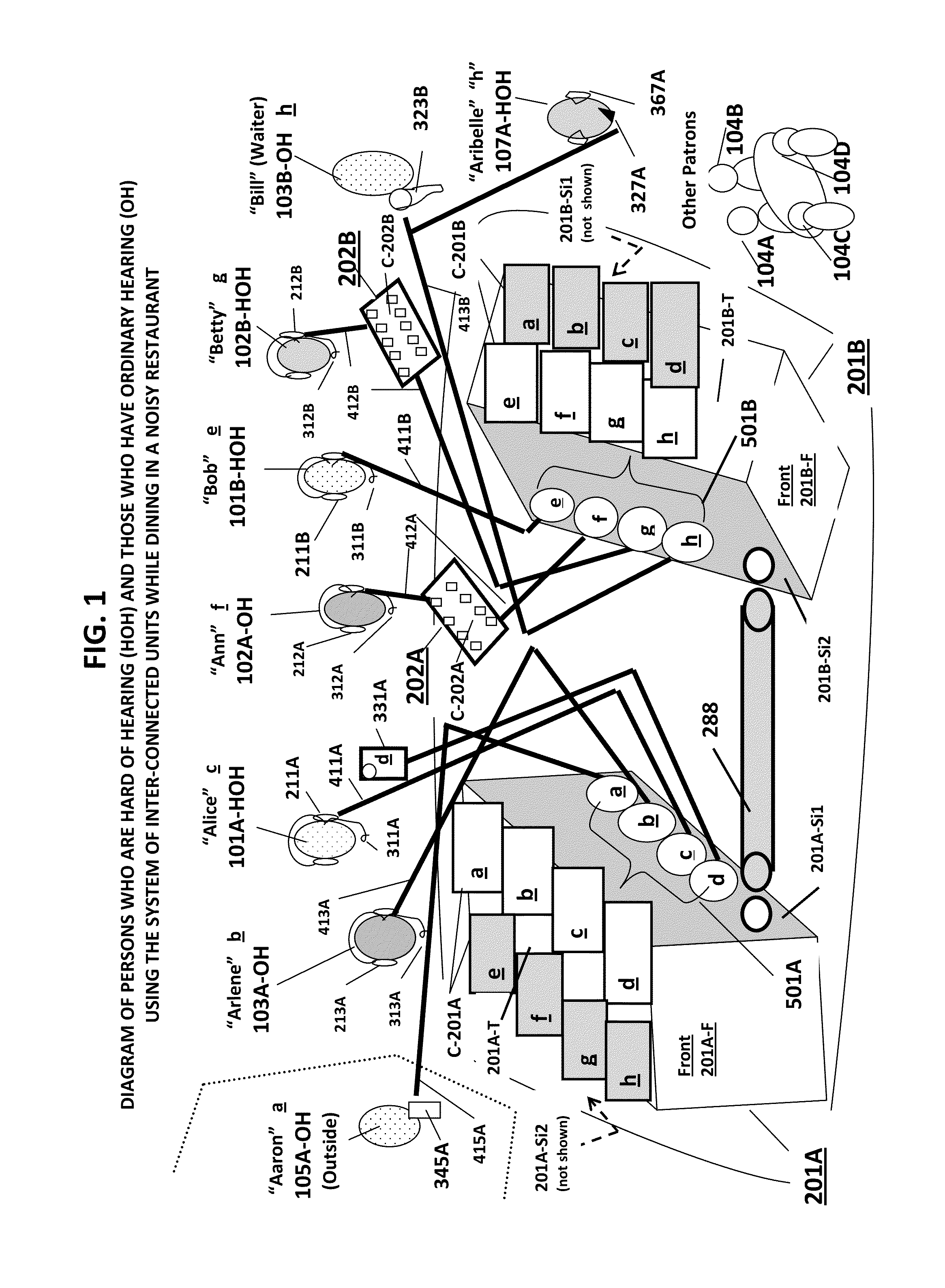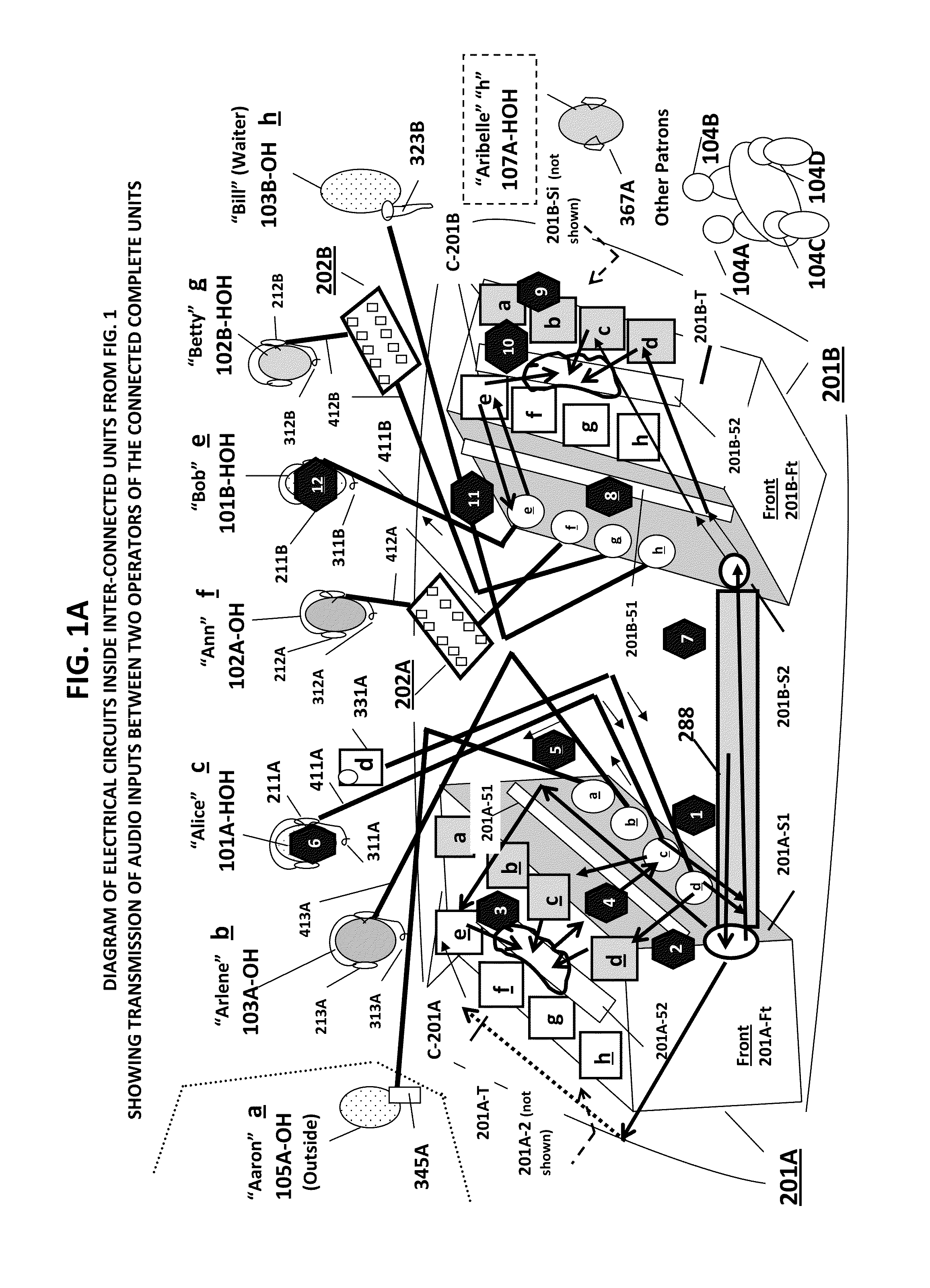As people get older, there is an increasing possibility that they may become hard of hearing.
This is currently a growing problem in the United States as the people of the baby boom generation have entered their 50s and 60s.
However, hearing aids have only been minimally successful in addressing the problems facing those who are hard of hearing in a variety of settings.
One of the main problems with conventional hearing aids is that they do not do a good job of selectively amplifying the volume of certain sound inputs while turning down the volume of others.
So a person with a
hearing aid might have trouble hearing a friend who is speaking to her in a crowded restaurant because all the
background noise in the restaurant is amplified by the
hearing aid along with her friend'
s voice.
It can be difficult for even a person who is not hard of hearing to tune into one speaker'
s voice among many and to tune out background music or the voices of other conversations.
It can also be difficult for the person of ordinary hearing to talk with a person who is hard of hearing in a noisy setting because raising the volume of one'
s voice so that the hard of hearing person can understand what is being said can be disruptive to other people sitting nearby who are not involved in the conversation.
Finally, it is extremely difficult for the hard of hearing person, even when wearing hearing aids, to engage in a conversation with a subset of the people with whom he / she is dining while other conversations are going on at the same time.
Another setting that poses some serious problems for the hard of hearing person is traveling in the car with other people.
The
noise from traffic while traveling in a vehicle can make it difficult even for people of ordinary hearing to carry on a conversation.
Another problem that can be addressed when using the system while traveling in a vehicle is the following: It can be very hard to get the hard of hearing person's attention, especially if he / she is wearing
headphones while listening to music or talking to someone in the vehicle.
Another setting that can be particularly difficult for the hard of hearing person is participating in business meetings or
teleconference calls at work.
Another setting which can
pose difficulties for the hard of hearing user is at a
sports arena.
f) Problems when Using Other Technological Devices and Interacting with Others:
The hard of hearing person can experience problems when he / she must communicate with others while using various communications devices and computer applications with other people.
It can be a serious problem for the hard of hearing person to be able to participate with other people when searching
the internet or listening to music while talking.
The hard of hearing university student must face serious problems when attending lectures in large auditoriums.
When the student is attending one of these lectures, it is often difficult to hear the professor speaking above all of the other noises coming from the room (such as people coughing and papers rustling).
Another problem that the hard of hearing student may face is having to integrate oral and written and visually presented material.
The problem with this approach is that watching television is often a social activity—people are talking while they watch TV together.
Another problem the hard of hearing user experiences when listening to television while wearing
headphones is that it is very difficult to hear any sounds coming from the immediate environment (because the headphones cover the ears, blocking out other sounds).
Even if the hard of hearing person is alone while listening to TV via headphones, there may be problems.
The main problem is that when the hard of hearing person turns the volume up of the TV
audio signal up, the volume of all of the sound tracks coming from the TV input (including music, sound effects and voices) are turned up at the same time.
The hard of hearing person often has difficulty tuning into the voices of the speakers and filtering out the
background noise or music coming from the TV input, even if the volume has been turned up to a high level.
This can be a problem even for persons who have ordinary hearing.
Like watching television while talking with others, going to the movie theater with friends can
pose similar problems for the hard of hearing person.
Hard of hearing persons can have difficulty communicating with professionals, especially when they also want to include a family member in a discussion with the professional.
For example, a hard of hearing person may bring their spouse with them to talk to an attorney or doctor, but have great difficulty tuning into the different speakers during the discussion, even if they wear conventional hearing aids.
What sometimes happens is that the professional begins speaking only to the “helper” and not to the hard of hearing person, because the professional is not sure that the hard of hearing person is really “getting” everything that is being said.
It is especially difficult for people who are hard of hearing to communicate over the telephone.
But the person who is not hard of hearing usually cannot hear what is being said on the phone and must have everything repeated.
In this way, the
interpreter does not have to worry about providing translation at a very high volume, which could be a strain for both the professional and the
interpreter.
Improvements in conventional hearing aids have tried to address the problems that people who are hard of hearing face in many public and private settings, but these improvements have only been minimally effective.
All of these potentially hearing-assistive systems are useful in specific situations, but none of them address the problems that hard of hearing persons face in settings as discussed in the previous section of this application.
But these systems do not provide a way for a specific hard of hearing person to share all of the inputs into the system with others, while differentially controlling the volume of the music input at the same time he / she is controlling the volume of a speaker's input with whom he / she is communicating, thereby creating his / her own personally volume-adjusted set of audio signals, while another hard of hearing person creates a different set of personally volume-adjusted audio signals coming from the same inputs into the connected units.
However, sound recorders have nothing that allows the user to selectively control the volume of the different inputs into a set of personally adjusted audio signals that are separate from another user sharing the sound inputs who differentially controls the volume of inputs coming into the connected units creating his / her own set of volume-adjusted signals.
None of these patented systems of the prior art provide effective solutions for the problems described in the previous section that hard of hearing persons must face in diverse public and private settings.
Taking the situation of dining in a noisy restaurant, the person using hearing aids in the middle of the table and talking to two persons on his / her left while two other persons are having a different conversation on his / her right would have a very difficult time “tuning in” to the conversation, because even if he / she changed the setting to “near” on his / her
hearing aid, there are several people who are in “near” proximity whose voices would also get picked up by the hearing aid, making it impossible to clearly separate the two conversations.
If the two were to turn the volume up on the IPOD so as to hear it over all the other nearby conversations and
noise, then this could be disruptive to other diners.
Also, there is a limit to how many different settings could be positioned on a hearing aid and whether you could have a “blend” of all of the selected inputs at the chosen volume levels, and whether it would be possible to change the settings continuously during the course of an interaction with the existing hearing-assistive devices of the prior art.
But this type of connection would not allow the hard of hearing person to talk with another person in the room while listening to the TV directly inputted into his / her hearing aids.
But hearing aids do not generally have controls that allow the user to continuously adjust the
relative volume of one track in relation to another.
And hearing aids of the prior art could not allow the input of another speaker's voice to be directly inputted into the hearing aid, along with the direct input from the television, and therefore would not be effective in allowing the user to switch back and forth between turning up the soundtrack from the TV versus turning up the sound track of the other speaker.
But they cannot be adjusted to target a specific voice separated from other voices in the immediate proximity.
While these attempts of the prior art to allow persons who wear hearing aids to share sound inputs, they do not allow the comprehensive sharing of multiple inputs that the present invention allows to users who are hard of hearing and those who have ordinary hearing.
In fact, this ability to share a
signal audio signal would not address the problems described in this
patent application involving hard of hearing persons in groups (where it is important to be able to separate audio inputs from voices of people who are in close proximity).
The previous sections of this application have shown that none of the reviewed prior art has the capacity to address the problems facing hard of hearing persons in the diverse settings described herein.
It has been shown that the prior art with respect to hearing aids does not provide any examples of devices that could be inter-connected to address the needs of hard of hearing persons in diverse settings.
Finally, a standard
sound mixer has a way to differentially adjust the volume of multiple inputs coming into the device, but there is only one set of controls, so different users of the mixer cannot differentially adjust the volume of the audio inputs, as desired.
But none of the methods extrapolated from any of these systems or devices can address the problems hard of hearing persons face as outlined in the background section of this application.
 Login to View More
Login to View More  Login to View More
Login to View More 


